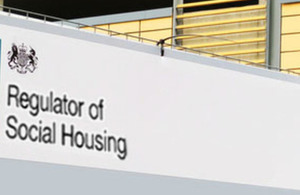Regulator of Social Housing publishes initial findings on damp and mould in social housing
RSH wrote to larger registered providers of social housing and asked them to provide information on damp and mould in their homes

Today (Thursday 2 February) the Regulator of Social Housing published its initial findings on damp and mould in England’s social housing.
Following the coroner’s November 2022 report into the tragic death of Awaab Ishak in Rochdale, the regulator asked all larger social landlords to submit evidence about the extent of damp and mould in tenants’ homes and their approach to tackling it. This covered local authorities and housing associations who together own and manage over four million homes in England.
There is more work to do, but the regulator’s initial findings from the responses show:
- Most social landlords understand the extent of damp and mould in their tenants’ homes and take action to tackle it, but could strengthen their approach.
- The vast majority of people living in social housing have homes that are free from damp and mould. However, living with damp and mould can have a serious impact on tenants’ health and wellbeing. It is essential that landlords identify and address these issues promptly and effectively.
- Some landlords submitted poor quality responses that lacked the detail needed for RSH to have confidence about their approach to tackling damp and mould.
- While the picture is incomplete, RSH’s best estimate is that less than 0.2% of social homes have the most serious damp and mould problems, 1-2% have serious damp and mould problems, and a further 3-4% have notable damp and mould.
The regulator will now follow up directly with landlords who submitted poor quality responses and those reporting high numbers of cases of damp and mould. RSH will take regulatory action where needed.
The strongest responses from landlords demonstrated robust data on the condition of tenants’ homes, as well as processes for investigating and remedying the root causes of damp and mould, and robust oversight from boards and councillors. Poorer responses relied more heavily on reactive approaches rather than proactively looking for evidence of damp and mould, and had weaker data and evidence about the condition of tenants’ homes.
The regulator’s initial findings provide lessons for all social landlords, and should prompt them to improve the way they identify and address damp and mould. Tenants who have damp and mould in their home should tell their landlord, and landlords should act promptly to address it and the underlying issue. The regulator will introduce more active consumer regulation from April 2024, including inspections, and the quality of homes, including the presence of damp and mould, will be a key focus.
Fiona MacGregor, Chief Executive of RSH, said:
"Tenants deserve quality services and homes that are safe and of a decent standard. Where there are issues, landlords need to act now to put things right, before we start our active consumer regulation including inspections of providers.
"We expect all providers to continue to look at how they can improve the way they identify and address damp and mould."
